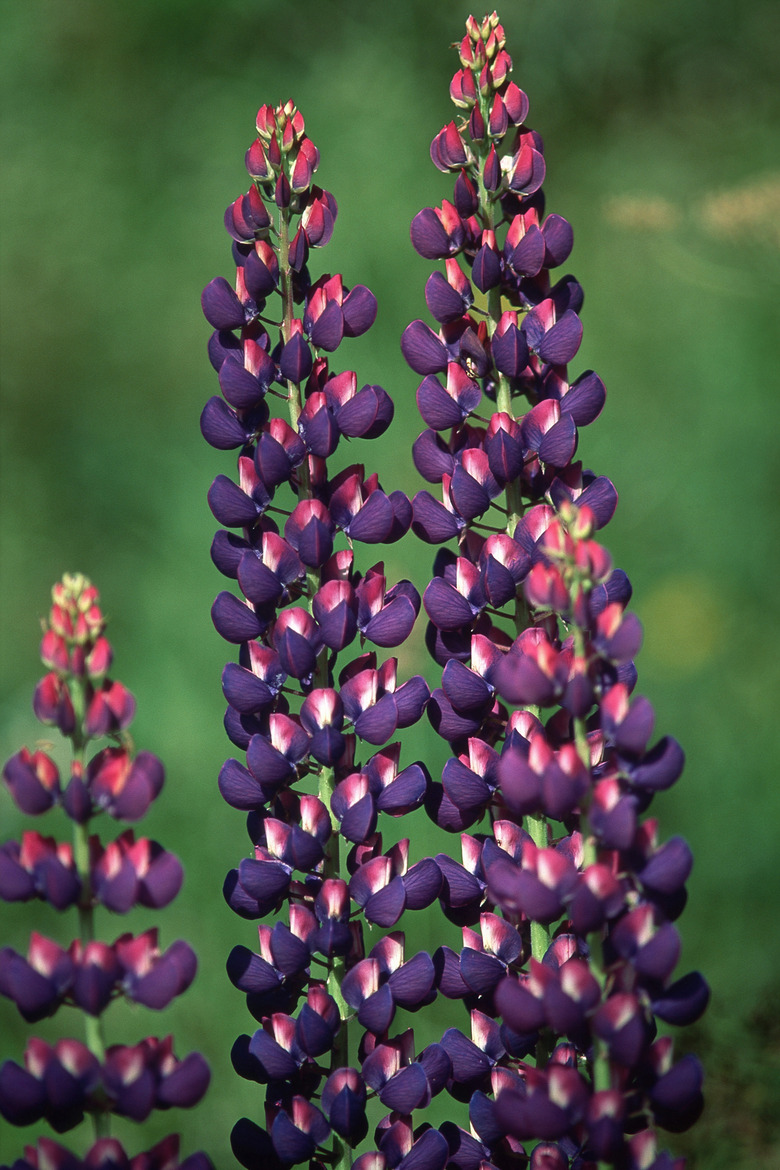Can I Grow Lupines In Georgia?
Lupines (Lupinus spp.) are a large group of annual and perennial flowers in the legume family. Depending on the variety, the perennials are hardy in U.S. Department of Agriculture plant hardiness zones 3 through 11. There are also annual lupines that can grow in all zones. Because they are a large, diverse group of plants, the question of growing lupines in a particular climatic region has a lot to do with the variety. Georgia lies primarily in USDA zones 7 and 8 and has hot, humid summers which favors some lupine varieties over others.
Step 1
Sundial lupine (Lupinus perennis) is native to Georgia and other regions of the eastern United States and tolerates heat and humidity well. However, it still requires excellent drainage and good air circulation to prevent fungal problems. In the wild it grows in dry, sandy soils in open forests and fields where air flow is good. Sundial lupine has dramatic ornamental qualities — reddish stems and massive blue flower spikes up to 4 feet tall. It has a distinct upright habit and pairs well with other native wildflowers growing around its base. Sundial lupine is hardy in USDA zones 3 through 11.
Texas Blue Bonnet
Step 1
Texas blue bonnet (Lupinus texensis) is an annual lupine that grows quite well in Georgia. It grows 12 to 24 inches in height and tolerates heat and humidity well. The plants thrive in soils of low fertility, as long as they are well-drained. Planting on a slope or in a raised bed is the key to success in Georgia. Blue bonnet can be seeded as part of a wildflower meadow and is also stunning in pure stands. Blue bonnet is a cool weather plant — sow seeds in late summer or fall and they will bloom the following spring.
Step 2
- Sundial lupine (Lupinus perennis) is native to Georgia and other regions of the eastern United States and tolerates heat and humidity well.
Soil-Improving Lupines
Step 1
Gardeners grow several varieties of annual lupine (Lupinus spp.) for their ability to improve soil conditions. These have the ability to accumulate nitrogen in conjunction with microbes that colonize the roots of the plants. Though they serve this important function, they are also highly ornamental plants and can tolerate the heat of Georgia landscapes with ease. They are not suitable in the north Georgia mountains, but are well-adapted to the light, sandy soils of the coastal plain. You are more likely to find seed for the soil-improving lupines in farm supply catalogs than in garden centers.
Russell Hybrids
Step 1
The "Russell" hybrid lupine (Lupinus polyphyllus "Russell") is one of the most stunning varieties, grown for its enormous 2-foot flower stalks that bloom in an array of colors. "Russell" lupines are hardy in USDA zones 4 through 8, but are difficult to grow in most parts of Georgia — they are extremely susceptible to fungal disease in the hot, humid weather. If attempted, grow them on a cool, north-facing slope, ideally in a location with a constant breeze. The cool, breezy conditions of the north Georgia mountains in USDA zone 7 are much more conducive to growing these lupines than the steamy lowlands.
Step 2
- Gardeners grow several varieties of annual lupine (Lupinus spp.)
- Russell" lupines are hardy in USDA zones 4 through 8, but are difficult to grow in most parts of Georgia — they are extremely susceptible to fungal disease in the hot, humid weather.
